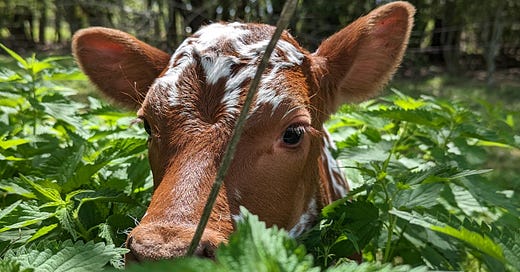This is part of a series that will be hosted in The Vault. We will periodically be resurrecting Applied Biodynamics articles for rerelease as a benefit for paid subscribers. When you are a paid subscriber, you will have access to all articles old and new that we release on this platform. Thank you for all your support. We can’t do this without you!
by Betsy Cashen, R.D. (registered dietician) reading by Stewart Lundy
“Spring stresses sudden and surprising emergence
Especially after a period of concealed existence.” - Noah Webster
Spring comes in on a palpable wave of warmth and refreshing scent, marking the time for pushing out of bud and leaf that follows on the heels of winter. If you take the practice of Spring cleaning to heart, and are looking to ally yourself with the regenerative forces at work in Nature, there is a pair of edible plants that lend themselves as Spring tonics par excellence! Two biodynamic preparations that will be familiar to biodynamic practitioners are the biodynamic compost preparations stinging nettle (Urtica dioica), BD 504, and dandelion (Taraxacum officinale), BD 506. Along with the value of these plants as compost preparations is their value as freshly harvested foods to eat at this time of year.
Photo by © 2024 All Rights Reserved. Used by Permission.
In his Agriculture Course, Lecture Five, Rudolf Steiner speaks of stinging nettle as the “greatest benefactor of plant growth in general”; a “jack-of-all-trades”; a carrier of sulfur, calcium, and potassium, with radiations of iron that it carries into the whole course of Nature similar to the iron radiating through our whole blood system. “In the world outside it is wonderfully similar to what the heart is in the human organism.” Its effect in the compost pile and for the earth “is like a permeation of reason and intelligence.” This is the picture given for nettle’s relationship to the soil of the farm and garden.
Keep reading with a 7-day free trial
Subscribe to The Josephine Porter Institute - Applied Biodynamics to keep reading this post and get 7 days of free access to the full post archives.





